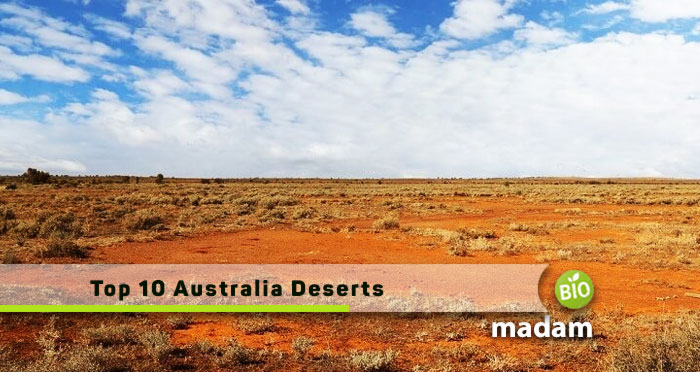Boasting sweeping plains, weathered mountain ranges, and golden sand dunes, the deserts of Australia harbor hidden gems for the bold. Covering vast interior swaths, these arid lands contain sights to reward intrepid travelers willing to embrace the harsh environments. From the shifting sea of parallel sand hills in one iconic desert, holding the longest dunes on Earth, to the sun-bleached animal bones dotting the red earth of another stony desert, Australia’s deserts reveal splendors to those who venture in. While seemingly inhospitable with stark terrain and extreme temperatures, the outback offers sparkling night skies, rare wildlife, Aboriginal art, and tranquility.
Here we count down the top 10 Australian deserts that should grace every adventurer’s bucket list to explore, spanning from the largest sandy desert worldwide to smaller mulga-freckled regions with clay pans, all offering jaw-dropping sights and unique discoveries awaiting.
Why Is Australia Mostly Desert?
Australia’s predominantly arid landscape, including expansive deserts like the Outback, is primarily due to its geographical location and climatic conditions:
- Location and Latitude: Positioned around 30° north or south of the equator, Australia falls within the subtropical regions, where dry climates and unpredictable rainfall are common characteristics of major deserts.
- Climate and Weather Patterns: Geographical isolation and a lack of proximity to large bodies of water result in an extreme climate with higher temperatures and limited precipitation. The subtropical high-pressure belt over the central part of the continent further contributes to arid conditions.
- Rain Shadow Effect: The Great Dividing Range on the eastern coast creates a rain shadow effect. Moist air from the ocean produces rainfall on the eastern side while descending dry air on the western side contributes to aridity in the interior.
- Limited River Systems and Soil Composition: Few major river systems with irregular flows, coupled with soils of low fertility and poor water retention, make it challenging for vegetation to thrive.
- Geological Factors: Australia’s long geological history, shaped by tectonic activity, erosion, and changes in sea levels, has influenced the formation of deserts and arid regions.
10 Biggest Deserts in Australia
Explore the vast and unique deserts of Australia, each with its own special features. From the big Great Victoria Desert to the smaller Pedirka Desert, these places show the beauty of Australia’s wide and dry landscapes.
Great Victoria Desert
The Great Victoria Desert blankets 348,750 square kilometers across South Australia and Western Australia as the largest desert on the continent.
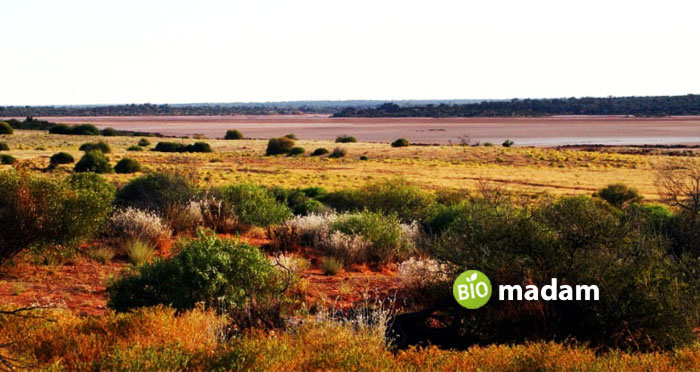
It contains awe-inspiring landscapes of red sand dunes, lonely plains, dry lakes, and rocky ranges that seem to stretch endlessly to the horizon. Hardy desert plants and unique wildlife have adapted to call this harsh but beautiful desert home. Recent conservation efforts recognize the fragile ecosystems that persist across the arid expanse despite the extreme climate. Intrepid travelers willing to embrace the isolation and challenges will be rewarded with sparkling night skies untouched by light pollution, tranquil serenity, and discoveries of flourishing life nurtured by rare waterholes.
Great Sandy Desert
The Great Sandy Desert unfolds over 267,250 square kilometers of Western Australia, captivating with iconic rust-colored dunes and the geological wonder of the Bungle Bungle Range within Purnululu National Park.
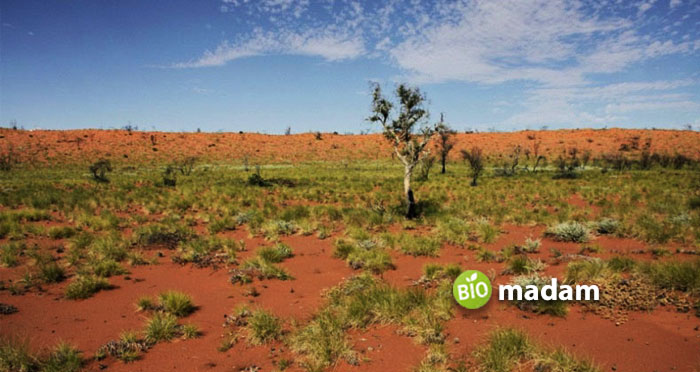
The eroded beehive-shaped domes of the Bungle Bungles glow with alternating bands of orange and gray in a maze of hidden gorges ideal for exploration. Contrasting the sculpted landforms, extensive dune fields shift and transform gradually over time, creating a sea of red sandy waves. Hardy desert shrubs dot the landscape while specialized animals like the rare marsupial mole and great desert skink carve out survival despite the heat and aridity.
Tanami Desert
Spanning the Northern Territory and Western Australia, the Tanami Desert covers over 184,500 remote square kilometers characterized by hot sand plains with small desert blooms after rare rainfall.
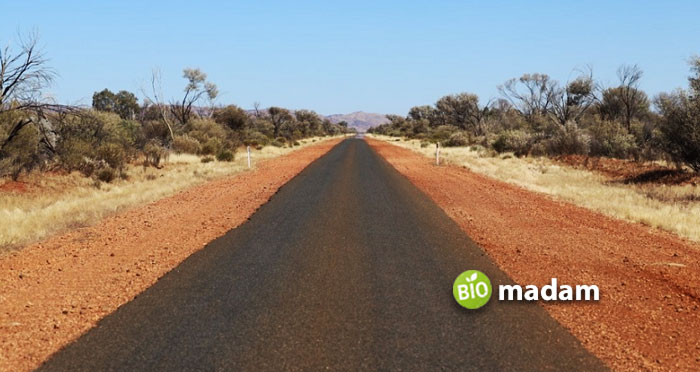
Despite the isolation and lack of water, the Tanami Desert remains a stronghold for Aboriginal groups such as the Warlpiri who have navigated the landscape for over 20,000 years. The desert is also home to unique reptiles like the woma python and distinctive desert wildlife like the bilby with its long ears and snout for hunting. Crossing the Tanami means embracing the stark yet beautiful desert environment and traces of those who have persisted despite the isolation and extremes.
Simpson Desert
The Simpson Desert contains iconic scenery across 176,500 square kilometers of Central Australia, known for massive tawny dunes rising over 30 meters and stretching endlessly to the horizon.
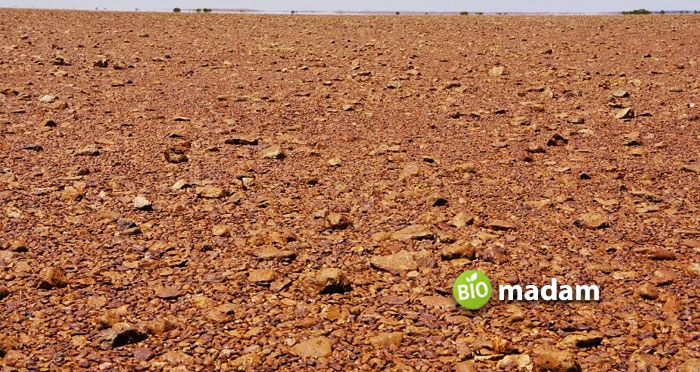
Shifting sands mean the landscape is constantly reshaped into waves and valleys of rich red color. For the native Wangkangurru people and more recent visitors, crossing the Simpson through the challenging terrain by camel or four-wheel drive is seen as a momentous achievement. The desert holds mythical tales, visible in ancient petroglyphs and paintings while showcasing adaptable nature, with specialized dune plants and animals that complete an entire lifecycle within only days after rare desert rain.
Gibson Desert
156,000 square kilometers of the Gibson Desert extend across sections of Western Australia, Northern Territory, and South Australia, characterized by red sandy desert with low shrubs and spinifex grasses along rolling dunes gently reshaped by winds.
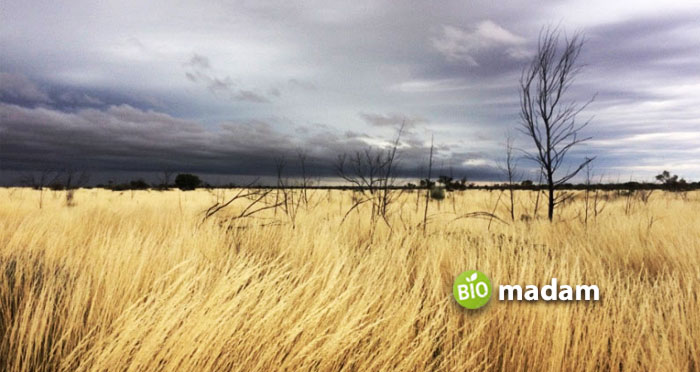
Most of the sparse human inhabitants are Indigenous groups who have historically traversed the expansive sandy plains and negotiated the extreme arid climate. Wildlife also persists by clever means like estivating underground during hot times or withdrawing to isolated rock holes. Despite the isolation and difficulty sustaining life, both people and animals reveal the resilience possible with knowledge of the environment. Exploring the Gibson Desert today still allows glimpses into untouched desert wildness.
Little Sandy Desert
In the remote northern expanses of Western Australia, the Little Sandy Desert reveals alluring scenes over 111,500 square kilometers of arid landscape marked by distinctive blood-red dunes.
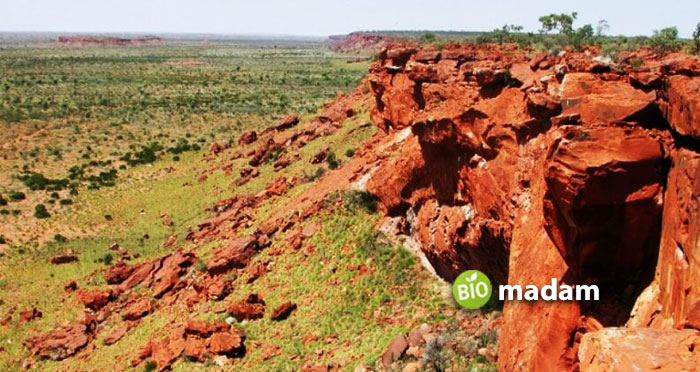
The desert may be lesser known and less frequently traversed than other Australian desert regions but still impresses intrepid travelers with diverse salt lakes that flood and crystallize seasonally, contrasting with the drifting dunes. Unique clay pans also pockmark the desert floor with their cracked surfaces while small desert blooms LINE watercourses after the sporadic rainfall. For those willing to leave the main track and embrace the isolation, the Little Sandy Desert offers exceptional escapes into the pristine Australian desert.
Strzelecki Desert
The Strzelecki Desert covers over 80,250 square kilometers of South Australia.
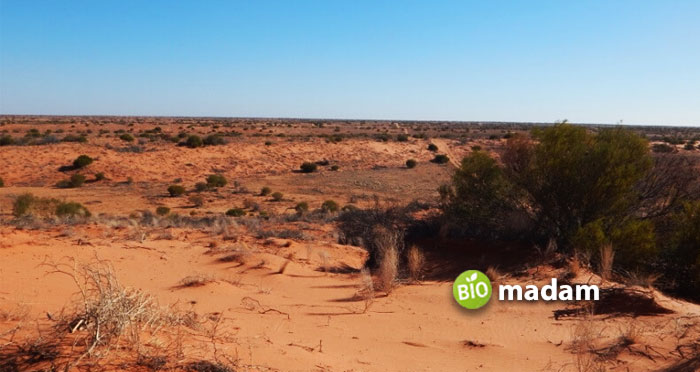
It is seen to have various arid landscapes ranging from rugged stony plains called gibber, to isolated stands of dunes, to blindingly white sparkling salt crusts along dry lakes. Life exists but remains fleeting and rare in the Strzelecki desert, revealing itself only briefly after rainfall through colorful wildflower displays, small insects swarming temporary lakes, and hardy reptiles like the stumpy-tailed lizard before disappearing underground again when the moisture evaporates in extreme heat. The isolation and austerity of the environment evokes sentiments of endurance in the face of adversity. Yet crossing the Strzelecki offers untouched wild Aussie desert.
Sturt Stony Desert
The aptly-named Sturt Stony Desert in South Australia extends around 29,750 square kilometers.
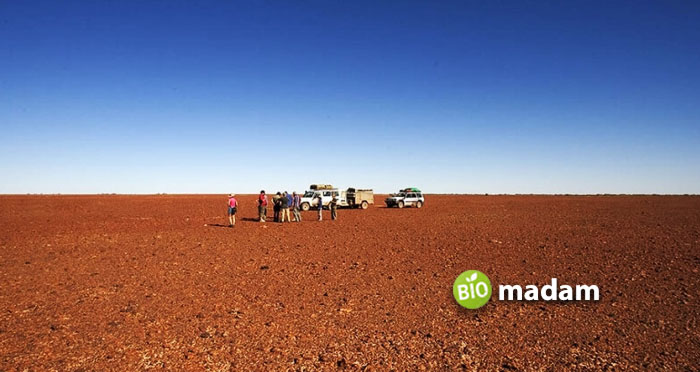
This desert is marked by rugged stony plains across its arid landscape strewn with eroded remnants of ancient mountain ranges and weathered rocks of red, purple, and brown. Sparse low shrubs cling to existence across crumbling soil while reptiles like the colorful painted dragon dash between sheltering boulders hunting insects that appear after rare rain. Life persists despite the heat and isolation among the rocky earth. The stony testimony of the land’s ancient past harbors a resilient beauty.
Tirari Desert
The Tirari Desert in South Australia reveals dramatic contrasts within its 15,250 square kilometers from the cracked clay of lifeless gibber plains to shifting golden sand dunes.
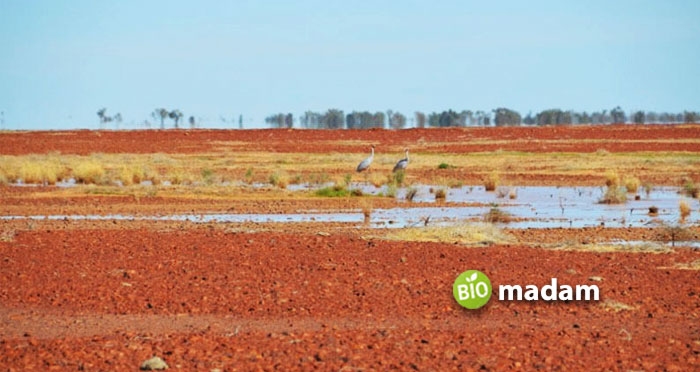
Meandering lines of low shrubs defiance across salt pans while desert blooms lining dry riverbeds display the extremes of boom and bust that characterize the environment. Traversing the Tirari requires embracing the isolation and austerity yet offers insight into defiant survival etched into the landscape. Intrepid travelers discover that life and death walk hand in hand.
Pedirka Desert
Among Australia’s desert regions, South Australia’s tiny Pedirka Desert spans only 1,250 square kilometers but imprints an outsized impression.
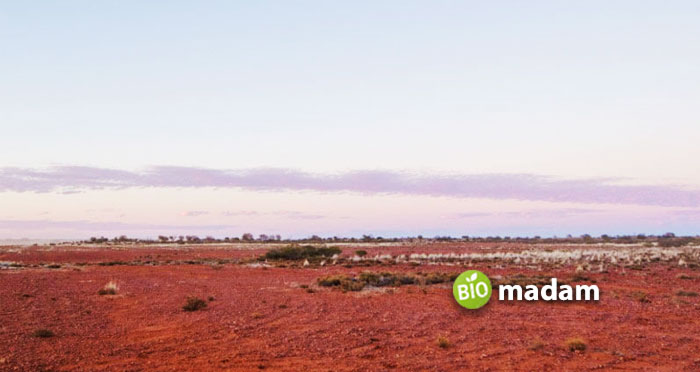
The mini-desert contains iconic rusty dunes and hard-won vegetation typical of surrounding larger deserts but on an intimate scale that invites quiet contemplation and deep connection. Isolated finds of ephemeral desert lakes and rare creatures reveal themselves to the attentive observer. The Pedirka Desert offers small yet powerful glimpses into the essence of defiant survival etched across Australia’s sprawling arid landscapes.
How Much of Australia is Desert?
Approximately 18% of the Australian mainland is classified as desert, covering about 2,700,000 square kilometers (1,000,000 square miles). However, it’s worth noting that around 35% of the Australian continent receives so little rainfall that it is practically considered desert. The majority of Australia’s deserts are located in the Western Plateau and the Interior Lowlands. The arid nature of these regions contributes to Australia being recognized as the driest inhabited continent in the world.
Conclusion
Australia’s deserts aren’t just dry and empty – they show the harsh but amazing beauty of remote, arid landscapes. They also prove that life can survive in tough conditions. These deserts are like a test of how much we want to explore and learn about even the toughest places. For brave adventurers who aren’t scared of challenges, Australia’s deserts are like special getaways. If you’re willing to go where the road ends, you’ll find peaceful rewards like stunning skies and quiet calmness. The rich red soil holds secrets for those who are curious enough to look.

As a freelance journalist, copywriter, and editor, Rachel Truman crafts compelling stories across travel, food, family, lifestyle, and B2B. With a keen eye for detail, Rachel specializes in creating engaging branded content, making every word an adventure

